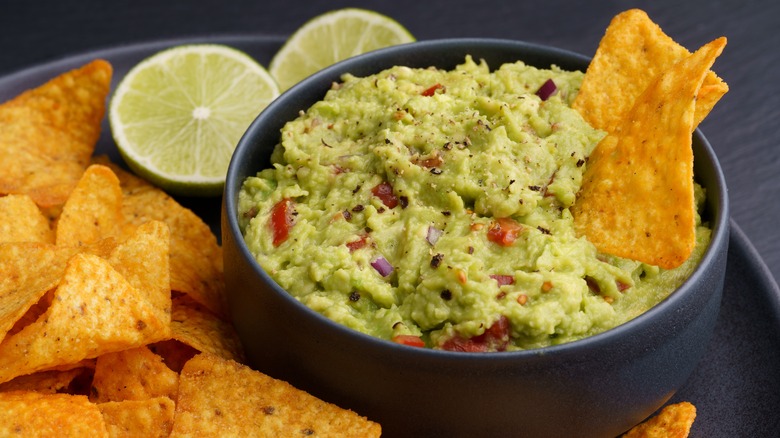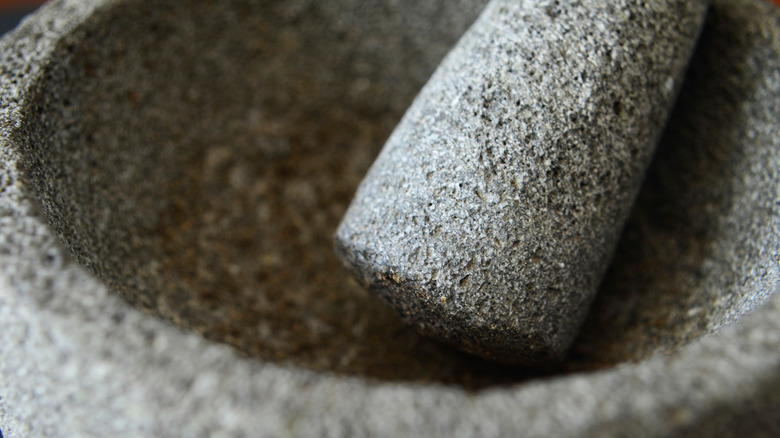How Guacamole Was Originally Prepared
Guacamole is one of those dishes we eat at home and invariably order out, especially if it's prepared tableside. It's easy to make but also a treat, and there are so many variations. Spicy, mild, and loaded with veggies, or a simple, tangy, garlicky spread.
Everyone has their bent on guac. It's super popular and for years now, has been a Super Bowl tradition, thanks in part to the NAFTA agreement implemented back in 1994, which was crafted to encourage trade between the North American countries of Canada, the U.S., and Mexico (per Smithsonian Magazine).
According to Food Origins, guacamole was originally called āhuacamolli, from the Aztec language Nahuatl. It sounds like a mole of avocado, right? Mole means sauce, āhuaca = avocado. Thus, avocado sauce. Per Avocados from Mexico, the Aztecs were making avocado sometime before the 16th century, after which the Spanish conquistadors spread the recipes from their travels — including guacamole presumably — to other parts of the world.
But how close is today's guacamole recipe to that of the Aztecs from centuries ago? Just how was guacamole originally prepared?
What was guacamole's original recipe?
There is a lot of speculation about how guacamole came to be. Some say, for example, it was created by the Aztec god Quetzalcoatl as a gift (per World's Garden). This, of course, doesn't tell us how guacamole was prepared way back when.
Indeed, there is no hard evidence about the supposed divine origins of guacamole, but Food Origins offers insight into the first recipe, reporting that Aztecs ate mashed avocados. Simple as that. We like to imagine them making it in a molcajete (pictured above), though.
The additional ingredients we associate with guacamole today — tomato, onion, garlic, chili peppers, Persian lime, and cumin — herald from Central America, Asia, Europe, and the Middle East. Their introduction to the original guacamole recipe was the result of the Columbian Exchange linking the New World and the Old World; in a way, like how the NAFTA agreement made way for a new "super" chapter in guacamole's long history (via Smithsonian Magazine).

